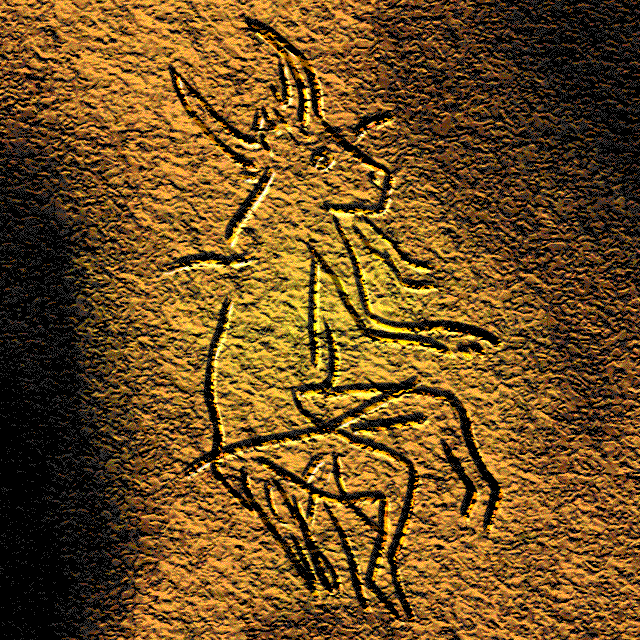|
Venus Of Schelklingen
The Venus of Hohle Fels (also known as the Venus of Schelklingen; in German variously ') is an Upper Paleolithic Venus figurine made of mammoth ivory that was unearthed in 2008 in Hohle Fels, a cave near Schelklingen, Germany. It is dated to between 40,000 and 35,000 years ago, belonging to the early Aurignacian, at the very beginning of the Upper Paleolithic, which is associated with the earliest presence of ''Cro-Magnon'' in Europe. The figure is the oldest undisputed example of a depiction of a human being. In terms of figurative art only the lion-headed, zoomorphic Löwenmensch figurine is older. The Venus figurine is housed at the Prehistoric Museum of Blaubeuren (). Context The Swabian Alb region of Germany has a number of caves that have yielded many mammoth-ivory artifacts of the Upper Paleolithic period. Approximately 25 items have been discovered to date. These include the Löwenmensch figurine of Hohlenstein-Stadel dated to 40,000 years ago and an ivory flute found at ... [...More Info...] [...Related Items...] OR: [Wikipedia] [Google] [Baidu] |
Cave Bear
The cave bear (''Ursus spelaeus'') is a prehistoric species of bear that lived in Europe and Asia during the Pleistocene and became extinct about 24,000 years ago during the Last Glacial Maximum. Both the word "cave" and the scientific name ''spelaeus'' are used because fossils of this species were mostly found in caves. This reflects the views of experts that cave bears may have spent more time in caves than the brown bear, which uses caves only for hibernation. Taxonomy Cave bear skeletons were first described in 1774 by Johann Friedrich Esper, in his book ''Newly Discovered Zoolites of Unknown Four Footed Animals''. While scientists at the time considered that the skeletons could belong to apes, canids, felids, or even dragons or unicorns, Esper postulated that they actually belonged to polar bears. Twenty years later, Johann Christian Rosenmüller, an anatomist at Leipzig University, gave the species its binomial name. The bones were so numerous that most researcher ... [...More Info...] [...Related Items...] OR: [Wikipedia] [Google] [Baidu] |
Reindeer
Reindeer (in North American English, known as caribou if wild and ''reindeer'' if domesticated) are deer in the genus ''Rangifer''. For the last few decades, reindeer were assigned to one species, ''Rangifer tarandus'', with about 10 subspecies. A 2022 revision of the genus elevated five of the subspecies to species (see Taxonomy below). They have a circumpolar distribution and are native to the Arctic, sub-Arctic, tundra, boreal forest, and mountainous regions of northern Europe, Siberia, and North America. Reindeer occur in both migratory and sedentary populations, and their herd sizes vary greatly in different regions. The tundra subspecies are adapted for extreme cold, and some are adapted for long-distance migration. Reindeer vary greatly in size and color from the smallest species, the Svalbard reindeer (''R. t. platyrhynchus''), to the largest subspecies, Osborn's caribou (''R. t. osborni''). Although reindeer are quite numerous, some species and subspecies are in d ... [...More Info...] [...Related Items...] OR: [Wikipedia] [Google] [Baidu] |
Tarpan
The term tarpan (''Equus ferus ferus'') refers to free-ranging horses of the Russian steppe from the 18th to the 20th century. It is generally unknown whether those horses represented genuine wild horses, feral domestic horses or hybrids. The last individual believed to be a tarpan died in captivity in the Russian Empire during 1909. Beginning in the 1930s, several attempts were made to develop horses that looked like tarpans through selective breeding, called "breeding back" by advocates. The breeds that resulted included the Heck horse, the , and a derivation of the Konik breed, all of which have a primitive appearance, particularly in having the grullo coat colour. Some of these horses are now commercially promoted as "tarpans", although such animals are only domestic breeds and not the wild animal themselves. Name and etymology The name "tarpan" or "tarpani" derives from a Turkic language ( Kazakh or Kyrgyz) name meaning "wild horse". The Tatars and the Cossacks distingui ... [...More Info...] [...Related Items...] OR: [Wikipedia] [Google] [Baidu] |
Flint-knapping
Knapping is the shaping of flint, chert, obsidian, or other conchoidal fracturing stone through the process of lithic reduction to manufacture stone tools, strikers for flintlock firearms, or to produce flat-faced stones for building or facing walls, and flushwork decoration. The original Germanic term ''knopp'' meant to strike, shape, or work, so it could theoretically have referred equally well to making statues or dice. Modern usage is more specific, referring almost exclusively to the hand-tool pressure-flaking process pictured. It is distinguished from the more general verb "chip" (to break up into small pieces, or unintentionally break off a piece of something) and is different from "carve" (removing only part of a face), and "cleave" (breaking along a natural plane). Method Flintknapping or knapping is done in a variety of ways depending on the purpose of the final product. For stone tools and flintlock strikers, chert is worked using a fabricator such as a hammerstone ... [...More Info...] [...Related Items...] OR: [Wikipedia] [Google] [Baidu] |
Flute
The flute is a family of classical music instrument in the woodwind group. Like all woodwinds, flutes are aerophones, meaning they make sound by vibrating a column of air. However, unlike woodwind instruments with reeds, a flute is a reedless wind instrument that produces its sound from the flow of air across an opening. According to the instrument classification of Hornbostel–Sachs, flutes are categorized as edge-blown aerophones. A musician who plays the flute is called a flautist or flutist. Flutes are the earliest known identifiable musical instruments, as paleolithic examples with hand-bored holes have been found. A number of flutes dating to about 53,000 to 45,000 years ago have been found in the Swabian Jura region of present-day Germany. These flutes demonstrate that a developed musical tradition existed from the earliest period of modern human presence in Europe.. Citation on p. 248. * While the oldest flutes currently known were found in Europe, Asia, too, has ... [...More Info...] [...Related Items...] OR: [Wikipedia] [Google] [Baidu] |
Südwestrundfunk
Südwestrundfunk (SWR; ''Southwest Broadcasting'') is a regional public broadcasting corporation serving the southwest of Germany , specifically the federal states of Baden-Württemberg and Rhineland-Palatinate. The corporation has main offices in three cities: Stuttgart, Baden-Baden and Mainz, with the director's office being in Stuttgart. It is a part of the ARD consortium. It broadcasts on two television channels and six radio channels, with its main television and radio office in Baden-Baden and regional offices in Stuttgart and Mainz. It is (after WDR) the second largest broadcasting organization in Germany. SWR, with a coverage of 55,600 km2, and an audience reach estimated to be 14.7 million. SWR employs 3,700 people in its various offices and facilities. History SWR was established in 1998 through the merger of ''Süddeutscher Rundfunk'' (SDR, Southern German Broadcasting), formerly headquartered in Stuttgart, and ''Südwestfunk'' (SWF, South West Radio), former ... [...More Info...] [...Related Items...] OR: [Wikipedia] [Google] [Baidu] |
Paleolithic Religion
Paleolithic religions are a set of spiritual beliefs and practices that may have appeared during the Paleolithic time period. Paleoanthropologists Andre Leroi-Gourhan and Annette Michelson believe unmistakably religious behaviour emerged by the Upper Paleolithic, before 30,000 years ago at the latest,Andre Leroi-Gourhan and Annette Michelson, "The Religion of the Caves: Magic or Metaphysics?", ''The MIT Press'', Vol, 37, October 1986, pp. 6–17. " cave art born 30,000 years before our era ... would appear to have developed simultaneously with the first explicit manifestations of concern with the supernatural." (p. 6) but behavioral patterns such as burial rites that one might characterize as religious — or as ancestral to religious behaviour — reach back into the Middle Paleolithic, as early as 300,000 years ago, coinciding with the first appearance of ''Homo neanderthalensis'' and possibly ''Homo naledi''. Religious behavior is one of the hallmarks of behavioral modernity ... [...More Info...] [...Related Items...] OR: [Wikipedia] [Google] [Baidu] |
Nicholas Conard
Nicholas J. Conard, (born July 23, 1961 in Cincinnati) is an American and naturalized German citizen who works as an archaeologist and prehistorian. He is the director of the department for early prehistory and quaternary ecology and the founding director of the Institute of Archaeological Sciences (Institut für Naturwissenschaftliche Archäologie) at the University of Tübingen in Germany. Education and career Conard received his bachelor's degrees in Anthropology and Chemistry at the University of Rochester, New York in 1983. He continued at the University of Rochester to be awarded with an interdisciplinary master's degree in physics, geology and anthropology in 1986. Conard earned an additional master's degree and a doctoral degree in anthropology at Yale University in 1988 and 1990, respectively. After achieving his Ph.D. he worked at the University of Connecticut as an assistant professor in Anthropology from 1991 until 1993. In the mid-1990s, he worked at the Römisch-G ... [...More Info...] [...Related Items...] OR: [Wikipedia] [Google] [Baidu] |
Behavioral Modernity
Behavioral modernity is a suite of behavioral and cognitive traits that distinguishes current ''Homo sapiens'' from other anatomically modern humans, hominins, and primates. Most scholars agree that modern human behavior can be characterized by abstract thinking, planning depth, symbolic behavior (e.g., art, ornamentation), music and dance, exploitation of large game, and blade technology, among others. Underlying these behaviors and technological innovations are cognitive and cultural foundations that have been documented experimentally and ethnographically by evolutionary and cultural anthropologists. These human universal patterns include cumulative cultural adaptation, social norms, language, and extensive help and cooperation beyond close kin. Within the tradition of evolutionary anthropology and related disciplines, it has been argued that the development of these modern behavioral traits, in combination with the climatic conditions of the Last Glacial Period and Last Gla ... [...More Info...] [...Related Items...] OR: [Wikipedia] [Google] [Baidu] |
Black Forest
The Black Forest (german: Schwarzwald ) is a large forested mountain range in the state of Baden-Württemberg in southwest Germany, bounded by the Rhine Valley to the west and south and close to the borders with France and Switzerland. It is the source of the Danube and Neckar rivers. Its highest peak is the Feldberg with an elevation of above sea level. Roughly oblong in shape, with a length of and breadth of up to , it has an area of about 6,009 km2 (2,320 sq mi). Historically, the area was known for forestry and the mining of ore deposits, but tourism has now become the primary industry, accounting for around 300,000 jobs. There are several ruined military fortifications dating back to the 17th century. History In ancient times, the Black Forest was known as , after the Celtic deity, Abnoba. In Roman times (Late antiquity), it was given the name ("Marcynian Forest", from the Germanic word ''marka'' = "border"). The Black Forest probably represented the bo ... [...More Info...] [...Related Items...] OR: [Wikipedia] [Google] [Baidu] |



.jpg)





